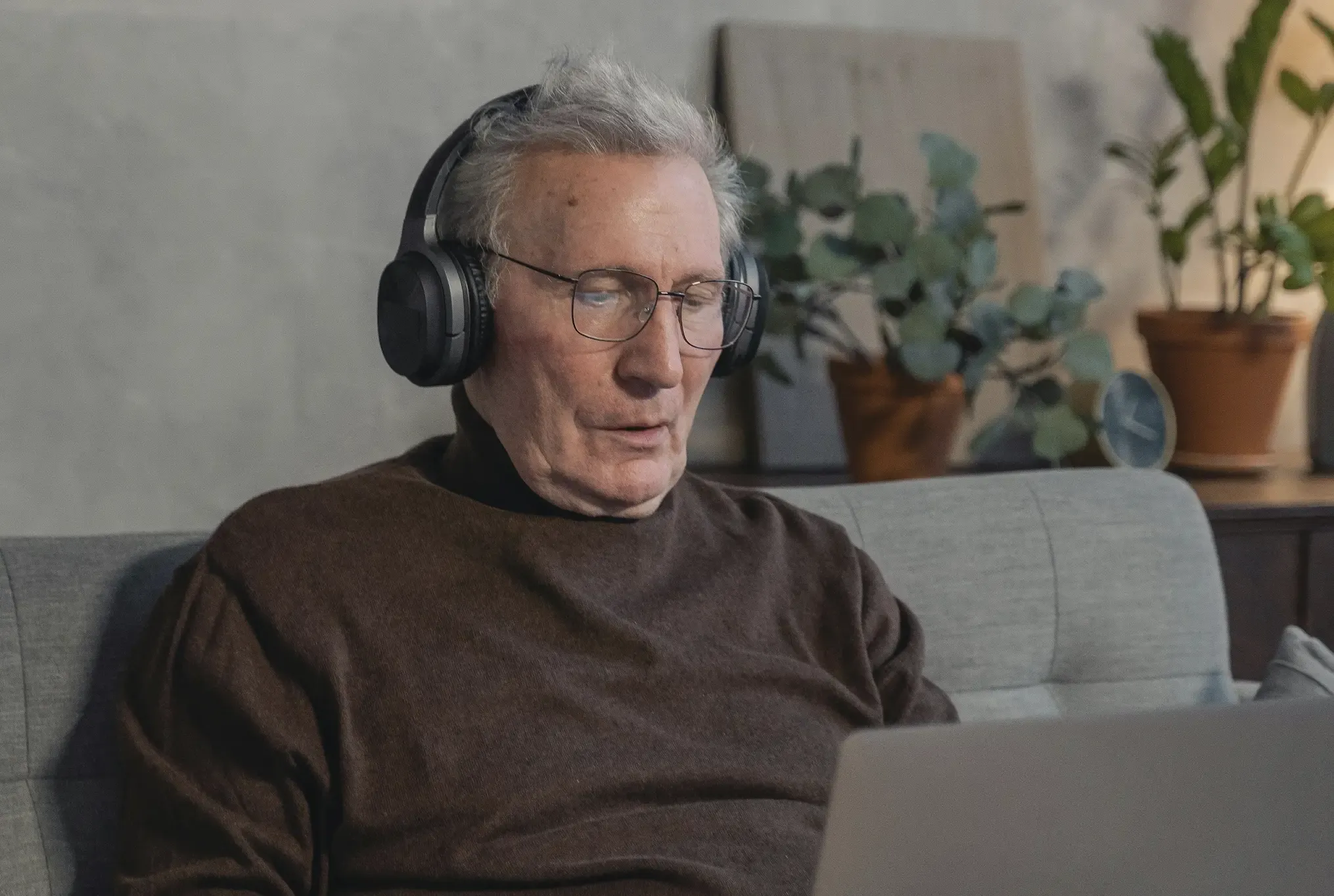Headphone Tips That Protect Your Hearing

Headphone Tips That Protect Your Hearing
5 mins
Published: 26 August 2025
26 August 2025
Safe Listening: Headphone Tips That Protect Your Hearing
Whether you love listening to music while working, catching up on podcasts during your commute, or watching TV without disturbing the household, headphones have become a daily essential. Headphones can be part of a healthy listening routine, as long as volume and duration are kept in check.
In this blog, we’ll explore practical tips for safe listening with headphones so you can enjoy your favourite audio without compromising on your hearing health.
Why Safe Listening Matters
Inside your ears are tiny hair cells that turn sound into signals your brain can understand. Unlike the hair on your head, these cells don’t grow back once damaged. Listening to music or podcasts at high volumes for long periods can overwork these cells, leading to noise-induced hearing loss.1 It’s estimated that 3.6 million Australians have some level of hearing loss, with noise exposure proving the biggest cause of preventable hearing loss.2
The good news is that most hearing damage from headphone use is preventable with the following safe listening habits.
Keep The Volume In The Safe Zone
Turning up the volume on your device might be tempting, particularly in noisy places, but it can damage your hearing. The World Health Organisation (WHO) warns that sounds above 85 decibels (dB) can cause hearing damage over time.3 At maximum volume, many devices can reach 100-110 dB, causing harm to your hearing in under 15 minutes.4
When it comes to safe listening habits, it’s recommended that you set the volume level to no more than 60 per cent of maximum.3 If someone next to you can hear your music, it’s too loud.
Choose The Right Listening Environment
You are more likely to raise the volume on your device in noisy environments like public transport, crowded shopping centres, or busy cafes.5 Instead of turning up the volume, try noise-cancelling headphones or wait until you’re in a quieter setting. Sustained listening in loud environments can put you at greater risk of hearing damage.
Give Your Ears A Break
Just like your muscles need a break between sets at the gym, your ears need a break between listening to protect your hearing. Experts recommend the 60/60 rule. This involves listening at 60 per cent volume for no more than 60 minutes at a time, then taking a break.6
This habit will give your ears time to rest and recover. Short listening breaks can also reduce the risk of noise-induced hearing loss, especially if you use headphones daily.
Choose Quality Headphones
Not all headphones are created equal when it comes to ear health. Noise-cancelling headphones are a great option as they will help to reduce background noise, allowing you to listen at a lower volume.7 Over-ear headphones are another great option. These place less direct pressure on the ear canal compared to earbuds.
Check Your Hearing Regularly
Early detection is key to maintaining long-term hearing health. If you notice ringing in your ears, muffled hearing, or difficulty following conversations, it’s important to see a hearing care professional.
Headphones should enhance your listening experience without putting your hearing at risk. By following safe listening habits, you can enjoy your favourite sounds for years to come. If you’re concerned about your hearing health, book an appointment at your local Connect Hearing clinic today. Our team of experts can provide personalised advice to keep your ears in top shape.
References
- National Institute on Deafness and Other Communication Disorders (16 April 2025), Noise-Induced Hearing Loss, www.nidcd.nih.gov, accessed 12 August 2025.
- Australian Government Department of Health, Disability and Ageing (14 May 2024), About ear health, www.health.gov.au, accessed 12 August 2025.
- World Health Organization (21 March 2025), Deafness and hearing loss: Safe listening, www.who.int, accessed 12 August 2025.
- Decibel Pro: dB Sound Level Meter (n.d.), How Loud Is 100 Decibels, Decibel Pro: dB Sound Level Meter, accessed 12 August 2025.
- Noise & Health (27 September 2021), The contribution of personal audio system use and commuting by bus on daily noise dose, National Library of Medicine, accessed 12 August 2025.
- ENT Health (n.d.), Your Ear Gear and Hearing Health, www.enthealth.org, accessed 12 August 2025.
- Hearing Balance and Communication (April 2025), Noise-cancelling headphones and quality of life, Hearing Balance and Communication, accessed 12 August 2025.
Author
Connect Hearing
Reviewed by:
Connect HearingSonova
.png?branch=web_prod)
.png?branch=web_prod)